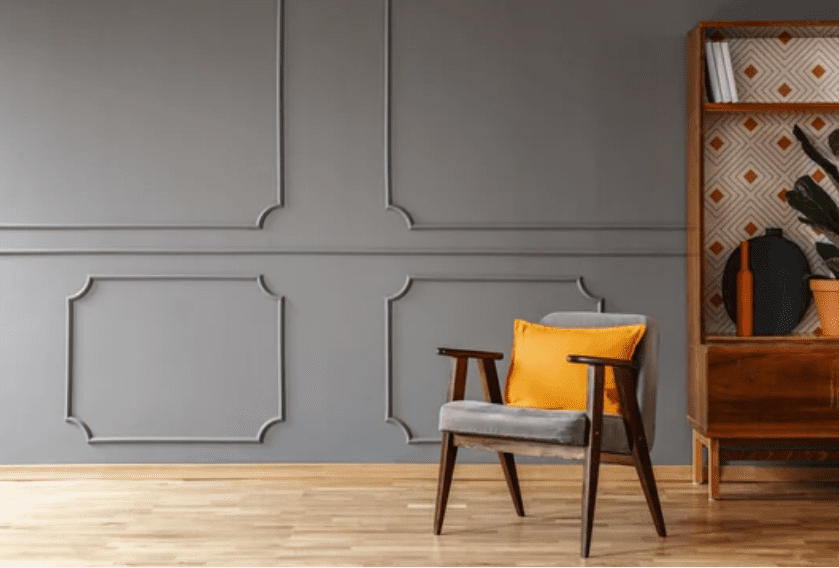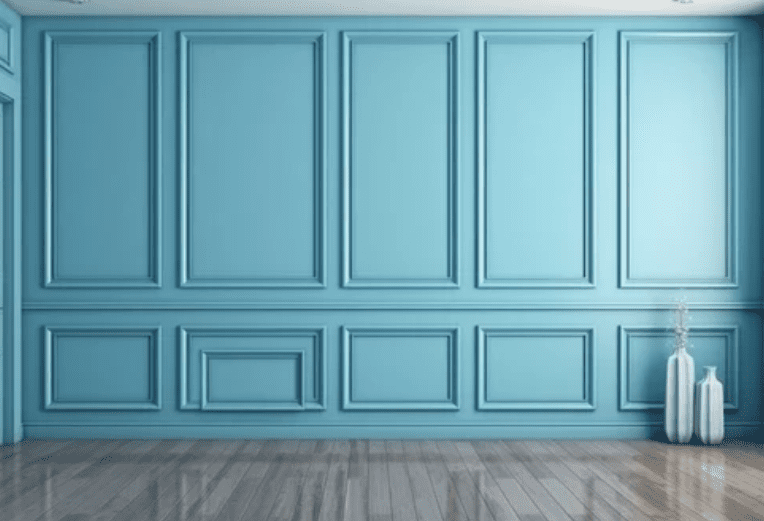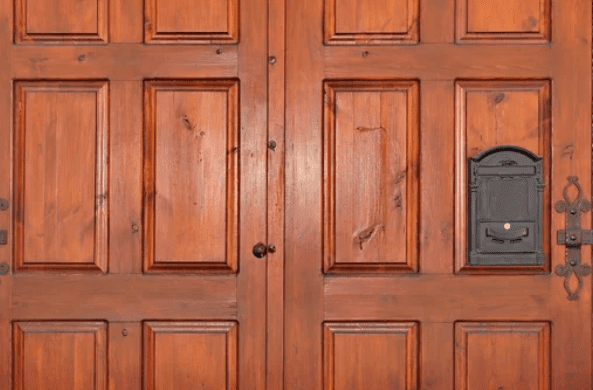
Explore alluring and avant-garde Wainscoting Ideas that can transmute your living spaces into sophisticated and timeless masterpieces. Delve into our comprehensive guide and learn how to implement these ideas effectively.
The Magic of Wainscoting
Introduction to Wainscoting
Wainscoting has long been used to add a touch of elegance and refinement to homes. But what exactly is wainscoting? In essence, it’s an architectural element that covers the lower portion of a wall, providing both aesthetics and protection against damage.
History of Wainscoting
Wainscoting dates back to the 16th century, when it was traditionally used in England to add insulation and protect the lower parts of the walls from damage. Over the centuries, wainscoting has evolved, offering homeowners a wide array of styles and materials. The decorative flair that wainscoting adds to a room has made it a popular choice among homeowners looking to elevate their interior design.
Types of Wainscoting
Beadboard Wainscoting

Beadboard wainscoting is a type of wall paneling that adds charm and elegance to any room. It consists of vertical wood planks, usually with grooves or beads along the edges, attached to a horizontal baseboard and a top rail.
Beadboard wainscoting can be painted, stained, or left natural, depending on the desired effect. It can also be installed in various patterns, such as horizontal, diagonal, or herringbone. Beadboard wainscoting is a great way to enhance the appearance and value of your home or office.
Board and Batten Wainscoting

Board and batten wainscoting is a type of wall paneling that adds architectural interest and charm to any room. It consists of vertical boards, called battens, attached to the wall with nails or glue, and horizontal panels, called rails, placed at the top and bottom of the battens. The battens create a grid-like pattern on the wall, contrasting the flat panels and the raised strips.
Board and batten wainscoting can be painted or stained to match any decor style, from traditional to modern. It is also easy to install and maintain, making it a popular choice for homeowners who want to enhance their interior design.
Raised Panel Wainscoting

Raised panel wainscoting is a classic and elegant way to add dimension and texture to your walls. It consists of a series of rectangular panels framed by thin strips of wood, creating a raised effect. Raised panel wainscoting can be installed in any homeroom, but it is especially suitable for formal spaces like dining rooms, living rooms, and offices.
It can also enhance the look of staircases, hallways, and entryways. Raised panel wainscoting can be painted or stained to match your existing decor, or you can create a contrast by choosing a different color or finish.
It can also be customized to fit any wall height, width, or shape. Raised panel wainscoting is a timeless and sophisticated option for adding style and value to your home.
Wainscoting Material Choices
Wood
Wood is the traditional material for wainscoting and remains popular due to its warm, natural appearance. Wood wainscoting can be stained or painted, allowing for customization to fit any design style.
MDF
Medium-density fiberboard (MDF) is an affordable alternative to wood. MDF wainscoting is resistant to warping and easy to paint, making it a practical choice for homeowners on a budget.
PVC
PVC wainscoting is a fantastic option for bathrooms and other areas where moisture is a concern. Unlike wood or MDF, PVC is impervious to water damage, making it the most durable choice for wainscoting material.
Wainscoting Ideas for Various Rooms
Wainscoting Ideas for the Living Room
Wainscoting can create a cozy and inviting atmosphere in a living room. Consider using higher-than-standard wainscoting for a dramatic effect. Pair it with a rich, dark paint color for a striking design.
Wainscoting Ideas for the Dining Room
In the dining room, wainscoting brings a formal elegance. A traditional raised panel wainscoting painted in a crisp white can create a timeless aesthetic.
Wainscoting Ideas for the Bathroom
In the bathroom, wainscoting serves a practical purpose as well as an aesthetic one. Choose PVC wainscoting for this space to prevent water damage. Consider a beadboard style for a quaint, cottage-like feel.
Wainscoting Ideas for the Bedroom
Wainscoting can add a touch of sophistication to a bedroom. Consider multi-level wainscoting in a soothing color like sage green or soft blue for a relaxing environment.
Choosing the Right Height for Wainscoting
Standard Wainscoting Height
Standard wainscoting height usually falls between 30 to 36 inches off the ground. This is often called “thirds rule,” as the wainscoting covers one-third of the wall, with the remaining two-thirds left bare or decorated.
Full Wall Wainscoting
If you’re after a dramatic effect, consider full-wall wainscoting. This type of design covers the entire wall and can create a unique and captivating aesthetic, mainly when painted in bold, contrasting colors.
Color Ideas for Wainscoting
Classic White Wainscoting
Classic white wainscoting never goes out of style. It offers a fresh, clean look that can make a room feel larger and brighter. White wainscoting pairs beautifully with just about any wall color.
Colored Wainscoting
Consider painting your wainscoting in a bold shade to add a pop of color to your room. Deep blues, greens, or even reds can add depth and personality to your space.
Advanced Wainscoting Ideas
Multi-Level Wainscoting
As the name suggests, multi-level wainscoting features multiple molding levels and panels. This complex design creates a dynamic, visually appealing look that adds depth and character to a room.
Picture Frame Wainscoting
Picture frame wainscoting features rectangular or square frames attached to the flat panel. It gives the illusion of a gallery wall and adds an artistic touch to a room.
Herringbone Wainscoting
Herringbone wainscoting takes the classic design and gives it a modern twist. The panels are arranged in a zig-zag pattern, creating a dynamic and visually striking look.
Maintaining Your Wainscoting
Cleaning and Caring for Wainscoting
Maintaining your wainscoting involves regular cleaning and occasional touch-ups. Dust and clean your wainscoting regularly to keep it looking its best. For wood or MDF wainscoting, touch up any scratches or nicks with matching paint.
Repairing Damaged Wainscoting
If your wainscoting becomes severely damaged, you may need to replace sections of it. It’s a good idea to keep extra solar panels on hand.
Cost of Installing Wainscoting
DIY versus Professional Installation
Installing wainscoting can be a DIY project for those who are handy, but hiring a professional may be the best option for complex designs or if you’re uncomfortable with carpentry.
Calculating Wainscoting Costs
Wainscoting costs vary widely depending on the material, style, and whether you install it yourself or hire a professional. You can expect to pay between $10 and $35 per square foot for materials and installation.
FAQs
Is wainscoting out of style? No, wainscoting is not out of style. It’s a timeless design element that can add value and aesthetic appeal to your home. Its versatility allows it to be adapted to various design styles, from traditional to modern.
Can I use wainscoting in a bathroom? Yes, wainscoting can be used in bathrooms. However, it’s recommended to use water-resistant materials like PVC in these high-moisture areas.
How high should wainscoting be? The wainscoting height can vary depending on personal preference and the room’s proportions. However, the “thirds rule,” which suggests the wainscoting covers one-third of the wall, is a standard guideline.
What colors work best with wainscoting? While white is a traditional choice for wainscoting, any color can work well, depending on the rest of your decor. Bold colors can make a statement, while softer hues create a more subtle, soothing effect.
Do I need a professional to install the wainscoting? While installing wainscoting yourself is possible, a professional may be the best choice for complex designs or if you’re uncomfortable with carpentry. A professional will ensure the job is done correctly and can save you time and potential mistakes.
What is the cost of installing wainscoting? The cost of installing wainscoting can vary widely depending on the material, style, and whether you install it yourself or hire a professional. You can expect to pay between $10 and $35 per square foot for materials and installation.
Conclusion
Wainscoting is an age-old design feature that continues to bring style and elegance to homes today. With a variety of styles, materials, and colors to choose from, wainscoting offers countless ways to transform your living spaces. Whether renovating an older or new home, consider incorporating wainscoting into your design for a touch of timeless elegance.























